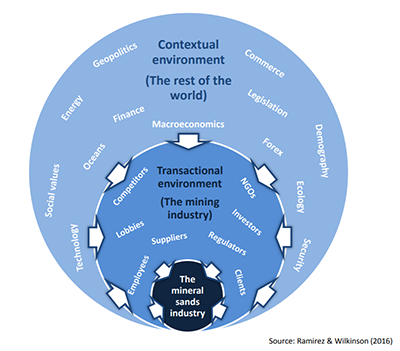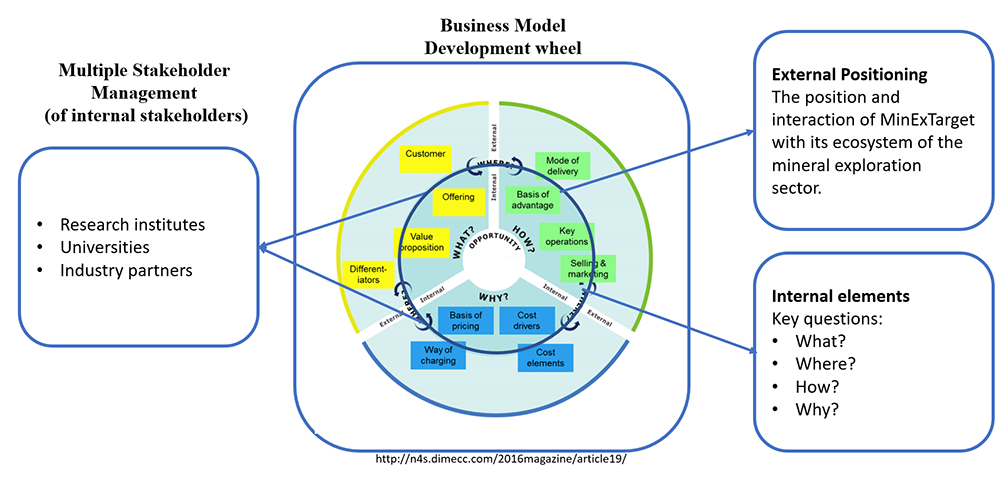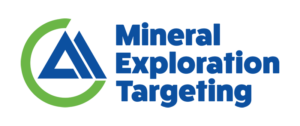The team of the Oulu Business school where I am part of has analyzed in the initial stage of the MinExTarget project the mining and in more specific the Mining exploration sector and created a market outlook report. It is understandable that the mining exploration sector is influenced in many different forms and ways. The mining and mineral exploration is also strongly linked to the commodity prices and mineral prices; hence the growth possibilities are linked to that. Therefore, it is important to Look at the overall trends in the field, the specificities of the market and possibilities for the MinExTarget project to position itself while ‘guesstimating’ the future changes in the mineral exploration market.

Figure 1: contextualization of the mining sector (current investment landscape, Minex)
One of the focus points is to look at its uniqueness and look that what creates value for its customers and the market in general. Business models are designed to create, capture, and deliver value within their field of operation (own ecosystem). You can look at business models from many different perspectives according to the setting you want to focus on while looking at the four key questions: what, where, why and who.
In the next phase, we will be working on creating and validating alternative business models, based upon the value propositions (the created service packages) for the MinexTarget project in cooperation with the different partners of the consortium. There is a visible drive for organizations to more a sustainable way of organizing their operations. This, along with the new possibilities of digitalization and automation advancements optimized and utilized in the MinExTarget project, unlocks new opportunities to create viable business models in the mineral exploration sector.
Alongside working as a project researcher, I am also developing and linking my own doctoral research to the MinExTarget setting. Business models in general have been studied a lot across different sectors, e.g. education, healthcare and waste management. However, to my knowledge, this is under-researched in the specific context of the mineral exploration sector. Hence, I am looking at the creation of business models from the viewpoint of the direct stakeholders as current business models are more transcending boundaries than ever before.

Figure 2: Stakeholder management perspective applied to the business model wheel.
The figure above illustrates the research setting. This raises questions like, what is the common ground, how is knowledge shared between the private and public stakeholders, and how is shared value created while strengthening their own core values. The aim is to capture these answers alongside the progression of the project (including the progression of the technical side) and creation of the business models which will happen in the next phases of the project. Needless to say, it is the direct stakeholders that provide the ingredients for the combined service packages that MinExTarget offers: improved sample preparation, novel mineral characterization and improved novel interpretation of results. Therefore, the choice to look at business models from this perspective as good calibration is key to progression.
Now something about myself. I am Nina van Vulpen and I am originally from the Netherlands with background studies in technical transport studies and logistics as well as intercultural communication and administration sciences. I have worked earlier in public and private sector organizations in different countries, including the Netherlands, Nicaragua, Spain, and the latest in the United Kingdom. Hence, in the MinExTarget project, all the pieces of the puzzle are currently combined as I have observed similar aspects in different settings. It is a good learning experience for me to see the scientific knowledge being developed in congruence of a ’real life’ setting.
Figures
Figure 1: Contextualization of the mining sector: Available online at: http://minexconsulting.com/the-current-investment-landscape-for-mining-exploration-mineral-sands/
Figure 2: Stakeholder management perspective applied to the business model wheel: original wheel Available online at: http://n4s.dimecc.com/2016magazine/article19/



